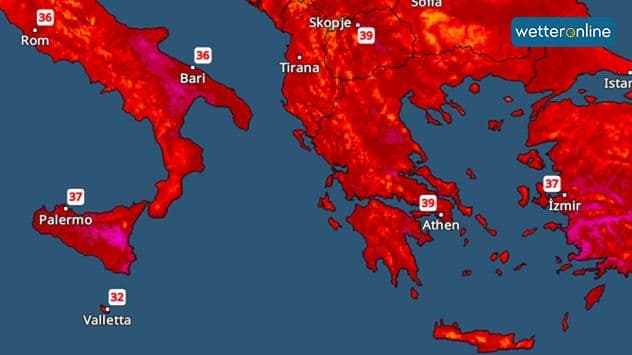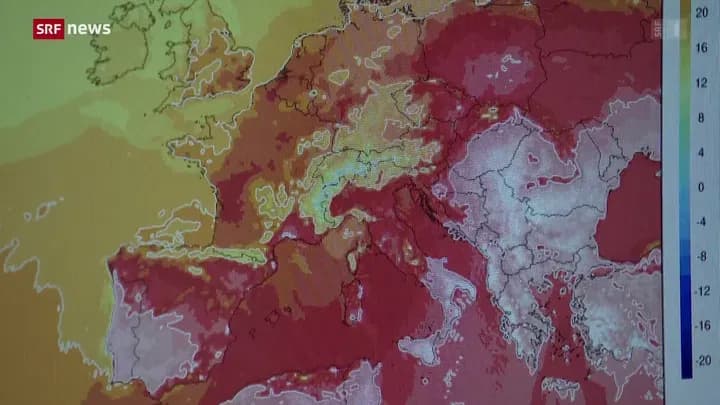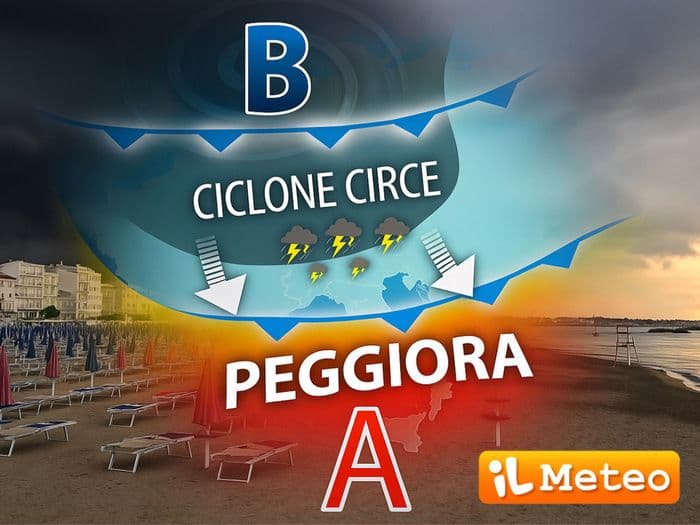Italy's Scorched Horizon: Adapting to Summers That Aren't Just Hot Anymore
Italy confronts extreme heatwaves. Discover how cities adapt, water supplies dwindle, and daily life shifts in response to a searing new summer reality.
The New Climate Canvas: Italy's Transformation from Sun-Drenched to Searing
Italy, a nation long celebrated for its sun-drenched landscapes and Mediterranean charm, finds itself at a climatic crossroads. The summer of 2025 serves as a stark illustration, with an African high-pressure system, ominously dubbed 'Kamel,' driving temperatures to unprecedented and hazardous levels. While the entire peninsula feels the heat, regions like , , , and the are particularly vulnerable. Meteorologists like Lorenzo Tedici from ilmeteo.it are sounding alarms, predicting potential highs of 50 degrees Celsius in Sicily's inland areas, a figure that could shatter Europe's standing record of 48.8 degrees set near Syracuse in 2021. Even the traditionally milder is bracing for 37 degrees. This isn't merely an exceptionally hot summer; it's a clear signal that Italy's climate patterns are undergoing a profound and potentially permanent shift, turning what was once an occasional extreme into a regular, searing reality.
Life Under the Glare: Daily Realities and Urgent Responses
For millions across Italy, this escalating heat has fundamentally reshaped daily existence. The challenge isn't just the daytime swelter; it's the relentless 'tropical nights,' where temperatures scarcely dip below 20 degrees Celsius even in the north, soaring to 28 degrees in the south. Imagine trying to find relief when the night offers little respite. The high humidity prevalent in areas like the amplifies this discomfort, making the actual heat feel even more oppressive. In interior, devoid of the sea breeze, the conditions are particularly brutal, contributing to the potential for record-breaking temperatures. This constant exposure poses significant health risks, subtly accelerating the aging process and stressing the body. Faced with these immediate threats, authorities are compelled to act. , for instance, has already banned outdoor work during the hottest hours until mid-September, a pragmatic, albeit disruptive, measure reflecting how deeply these new climatic realities are impacting the very rhythms of Italian life.
Strained Lifelines: Water, Power, and the Fight for Basic Resources
Beyond the immediate discomfort and public health concerns, Italy's foundational infrastructure is under immense strain. The most critical challenge emerging from this prolonged heat is the deepening water crisis. , a region already at the forefront of the temperature extremes, sees its reservoirs dangerously depleted, a direct consequence of a dry winter and an unpredictable spring. Water rationing has become a grim reality in several areas, highlighting the precarious balance of supply and demand. Concurrently, the intense heat places unprecedented pressure on the power grid. As air conditioning units run non-stop in a desperate bid for relief, the risk of blackouts escalates dramatically, threatening to plunge communities into darkness and further exacerbate the already difficult conditions. These are not isolated incidents but interconnected vulnerabilities, underscoring how extreme heat directly jeopardizes the availability of essential resources, turning the fight for basic necessities into a daily struggle.
Beyond Tourism: Reimagining Italy's Economy and Future in a Warming World
Italy's economic fabric, traditionally woven with threads of tourism, agriculture, and outdoor industries, faces an existential re-evaluation in this warming world. The immediate measures, such as the ban on outdoor work in , while necessary for public safety, inevitably carry economic repercussions, impacting productivity and revenue for countless businesses. But the implications stretch far beyond temporary bans. How will the 'new normal' of searing summers affect the millions who flock to for its cultural heritage and scenic beauty? Will once-bustling piazzas become too hot to enjoy? What future awaits its renowned vineyards and olive groves under relentless heat and drought? This profound shift demands more than just reactive policies; it calls for a systemic reimagining of economic model. Investing in climate-resilient infrastructure, diversifying economic activities, and innovating in sustainable practices are no longer optional extras but urgent imperatives for a nation whose prosperity has always been deeply intertwined with its climate.
Lessons from the Boot: Italy's Heatwave as a European Harbinger
experience isn't an isolated meteorological event; it's a stark preview of the challenges confronting the broader continent. As an early and acutely affected front-runner in the climate crisis, the lessons emerging from 'the Boot' offer invaluable insights for its neighbours. The definition of a heatwave – three or more consecutive days above 30 degrees Celsius – is becoming commonplace not just in but stretching across Southeast , from to the . What is enduring today, other nations may face tomorrow. Its struggles with water scarcity, power grid instability, and the need to adapt daily life and economic models serve as a potent case study. By observing proactive measures, its infrastructural vulnerabilities, and its attempts to recalibrate, other countries can glean critical knowledge, shaping their own strategies for resilience and adaptation. , in its current struggle, is inadvertently charting a course for collective future in a rapidly warming world.
Related Articles

Beyond the Thermometer: How Italy Adapts to its Enduring Heat

Beyond the Thermometer: How Italy Adapts to its Enduring Heat

Italy's Summer Paradox: From Alpine Deluge to Sicilian Inferno

Italy's Summer Paradox: From Alpine Deluge to Sicilian Inferno

Italy's Atmospheric Awakening: Navigating a Summer of Unprecedented Volatility

Italy's Atmospheric Awakening: Navigating a Summer of Unprecedented Volatility

Under the Scorching Sun: How Spain's Heatwaves Are Redefining a Nation
